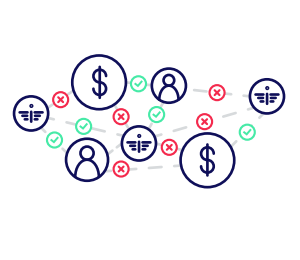Q&A: How micro-incentives are helping to advance value-based care
Monetary micro-incentives routed directly to individual clinicians are being used to shift providers into value-based behaviors without the need to re-contract rates or design new payment models.

Q: The industry’s transition to value-based care hasn’t made much progress, despite a long history of transition away from fee-for-service. Why do you think that is?
Jean Drouin: Our country’s fee-for-service model has become unsustainable. What originated in the 1900s as a practical system to pay individual doctors for services is a leading cause of today’s surging healthcare costs. A lot has changed over the last century. Remarkable advancements in drug development and clinical care have dramatically increased life expectancy, making it possible to live with multiple chronic conditions. This has increased utilization, and with it, healthcare cost growth. The care experience isn’t always what it should be, and clinicians are burned out by administrative work to document and justify every claim they submit to health insurers.
In the pursuit of value-based care, the Centers for Medicare & Medicaid Services (CMS) led the charge, establishing programs such as Bundled Payments for Care Improvement (BPCI) and accountable care organizations (ACOs). And the commercial insurance industry quickly followed suit. Unfortunately, slow provider adoption and minimal behavior change has created major headwinds in the attempt to scale value-based contracting. What holds change back is that contracts are too complex, incentives are neither aligned, timely, nor salient; provider performance is difficult to forecast, and payment reconciliation is cumbersome.
Q: The majority of healthcare spend is controlled by what physicians choose to do with their pens (or now, keyboards). How can we change physician behavior to drive the change that’s needed for greater value-based care adoption?
Jean Drouin: It’s true. Every day physicians are responsible for making hundreds of decisions. ‘Which specialist should I refer to?’ ‘Should I prescribe a branded or generic drug?’ ‘Do I need to repeat lab work or not?’ These decisions need to be made in coordination and collaboratively across care teams. They require insights into the patient journey. Unfortunately, while most physicians want to make the highest value decisions for their patients, they aren’t given the information needed or incentivized to change. To ensure that every decision is made to optimize for the best patient outcomes at the lowest cost of care, we can’t rely on a system that sets up providers as siloed individual contractors who bill for each activity they perform. We have to fundamentally change the way healthcare is delivered and paid for.
Leveraging the principles of behavioral economics to drive physician behavior was the subject of research conducted by Ezekiel J. Emanuel, MD, et al., in the study, “Using Behavioral Economics to Design Physician Incentives That Deliver High-Value Care.” That research provides examples of successful programs that tie behavioral economic principles to incentives for physicians to deliver high-value care. The authors recognize that rigorous evaluation of infrastructure changes and incentives are needed to design payment systems that result in high-quality, cost-conscious care.
Q: How do you think micro-incentives can help physicians overcome some of the challenges that have traditionally been roadblocks for value-based care?
Keith Florance: The beauty of micro-incentives is that they shift providers into value-based behaviors without requiring them to enter complex value-based contracts.
They reward clinicians early, directly, and with a frequency that can be connected to the actual cost-saving, high quality decision. In most value-based contracts, “rewards” may come a year or more after an action is taken. Additionally, micro-incentives can be routed directly to individual clinicians and front-line staff, rather than hitting the practice’s bottom line as a lump sum, tying payment to individual action.
Ultimately, providers can be rewarded for making higher-value care decisions while still operating under a fee-for-service model. The fee-for-service model itself can become value-based.
Q: How do you know this incentive framework and behavioral nudges are really going to drive meaningful change in the daily decisions of providers?
Keith Florance: The incentive platforms and programs in the market today are narrowly focused on gaps in care and coding strategies, with the goal of impacting revenue versus medical spend. Unfortunately, this limited approach doesn’t inspire change in physician practice or referral patterns. Clinical decision support tools funnel pertinent information for decision-making into the clinical workflow but they lack the personalized content and programming needed to drive behavior change.
Leveraging behavioral economics makes it possible to reframe the entire institution of utilization management and prior authorization. While utilization management drives provider behavior via penalties, micro-incentives drive behavior via reward. It’s the difference between a ‘carrot’ and a ‘stick.’
In fact, controlled studies have already demonstrated that when behavioral science is applied to physician decision-making it drives 15% more higher-value referral decisions. Also, 80% of primary care physicians receiving micro-incentives referred patients to higher-value specialists they had never used before— driving a substantial forward-looking reduction in the total cost of care. In the same study, orthopedic surgeons who received micro-incentives improved their referral rate of patients to high-value sites of care, reducing their procedure costs by 15% over those in the matched control group.
Jean Drouin, MD, is CEO of Clarify Health
Keith Florance is General Manager of Transformation and Performance at Clarify Health